On Friday night, I got to go to a beer dinner hosted by Stephen Beaumont at the Capital Dining Room at the National Suites Hotel in Ottawa. You know Stephen Beaumont. He doesn’t really need any introduction. He’s been writing about beer for 23 years. He has a book coming out soon. It’s the World Atlas of Beer. If you’re reading this blog, there’s a good chance you will get a copy for Christmas. I say go buy it now and make life difficult for your relatives. They’ll probably be forced to buy you beer if you already have a copy.

Stephen Beaumont would later go on to reveal that he cannot do the moonwalk, proving that no one is perfect.
He’s been writing about beer and food for a long time, so let’s see what we can learn from his beer dinner.
FIRST COURSE – Tasting of Duck Prosciutto with caramelized onion and peppers, sausage, cured ham, grilled asparagus with marinated buffalo mozzarella, warm olive and black plum relish
PAIRING–Black Oak Pale Ale
This is a fun plate because of the contrasting components. It’s a playful first course because you get to match flavours. Black Oak Pale Ale is balanced enough that some element of it stands up to just about everything on the plate. The earthy hops stand up nicely to the ham and asparagus bundle. The carbonation is enough to lift the fat from the sausage and prosciutto off the palate before the next bite. The crystal malt sweetness works double duty here as it matches the sweetness of the onion and peppers and also provides a nutty character that works with black olives. I was not expecting that last part. Discussion around the table on a dish like this is fun, because people begin to suggest combinations. Lets you get to know your dining companions a bit.
SECOND COURSE – Pulled Pork Ravioli with roasted pepper fennel sauce and crumbled goat cheese
PAIRING– Spearhead Hawaiian Style Pale Ale
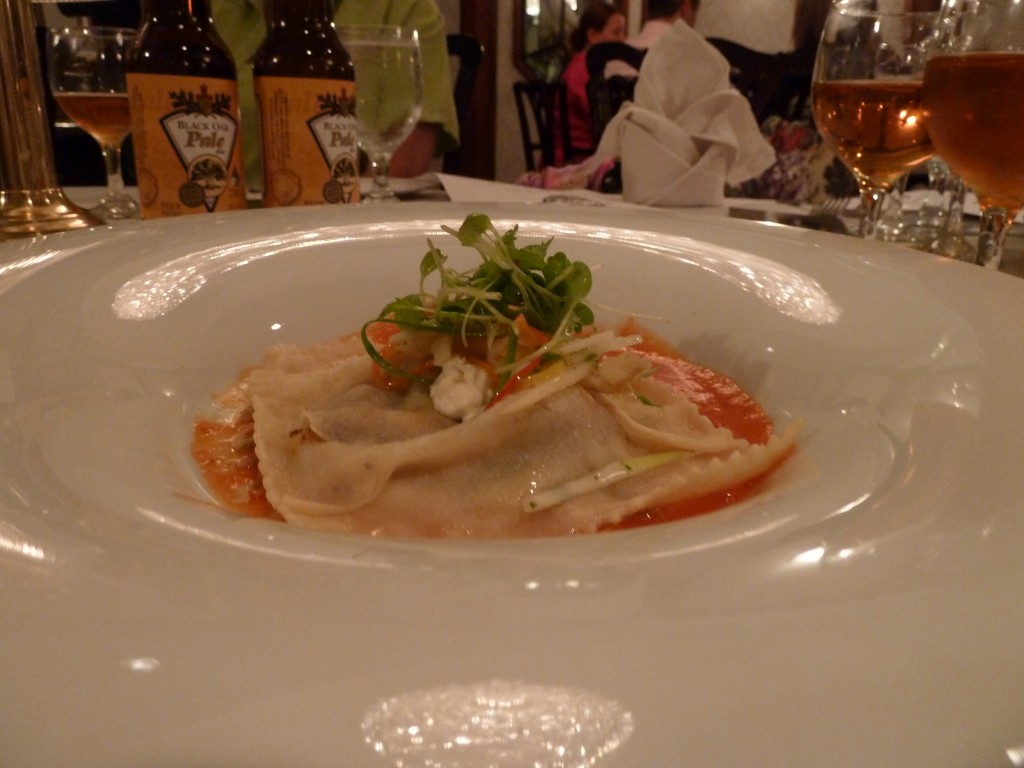
Never having had pulled pork in ravioli format, I am now curious as to the potential of a pierogi and zywiec application.
Spearhead works well here because the pineapple aroma is evocative of Luau, so it’s a natural for a pork dish. The body is full enough to stand up to the combination of the pulled pork and sauce and there’s some pleasant interaction before the bitterness cuts through the richness of the goat cheese. One element that isn’t listed are the watercress microgreens, which added a mild, bitter, peppery note that helped with the transition between each bite and sip. It’s a minor touch, but because it reduces the fullness of the goat cheese on the palate, an important one.
THIRD COURSE – Spiced Potato Broth with clams, mussels, shrimp, spinach, double smoked bacon in beer broth
PAIRING – Green Flash West Coast IPA
Stephen warned us in advance that this pairing might not work. Mostly he wanted to be able to launch the Green Flash West Coast IPA in Ontario. This is fair because if I’d been given the option I probably would have too. I’m unused to the progression here from hoppy to hoppier to hoppiest.
It’s a good dish, but difficult to pair because I feel like the IPA is there to cut the sweetness of the shellfish in combination with the smoky, salty broth. The natural inclination of a diner presented with a bowl of shellfish is to eat the shellfish first, leaving a pool of broth. It’s tasty, certainly, but the pairing sort of falls apart at that point. Possibly you could trick the diner into making it work with a deeper bowl, but then it wouldn’t plate as nicely. Good separately, not a great pairing.
FOURTH COURSE – Stuffed Squid with Chorizo Sausage and Rice cooked in tomato beer broth
PAIRING– Beau’s Venskab
I’ll let Steve Beauchesne explain the Venskab.
This is a pretty complex beer. There’s some citrus from the yuzu, and some earthy mint from the bog myrtle and perle hops. The sweetness from the cane sugar and ice wine chips plods down the centre of the palate, but the whole thing results in a dry, oaky finish as a combination of the barrel aging and champagne yeast. Maybe Anders Kissmeyer is a genius. I don’t necessarily get it.
I feel like no single dish is going to stand up to all of the flavours in the beer. I think the best you can do is attempt to accentuate a few characteristics. The earthy combination of chorizo and rice plays with the bog myrtle. The dish is fairly salty, right down to the tomato broth, which works well with the drying finish.
I saved some for dessert, because it seemed like a dessert beer to me.
FIFTH COURSE – AAA Strip Loin marinated with beer-soy-honey, Yukon mash in Yorkshire pudding
PAIRING– Marston Pedigree
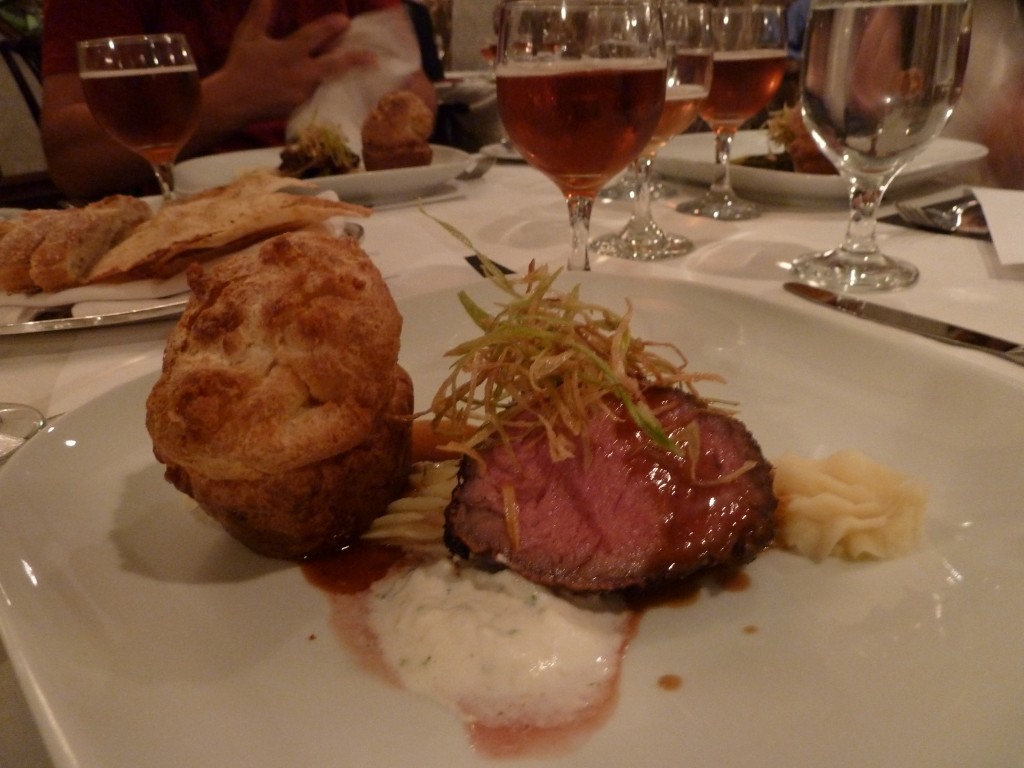
Yes, it’s beef. Yes, it’s served with English pale ale. Sometimes these things are classics for a reason.
This is a combination that you’d be happy to see on the groaning board of any English pub. In that respect it’s a classic pairing. Pedigree has enough malt character to stand up to beef with its grainy nuttiness. The thing that elevates this is that the beer is used in the marinade and also in the saucing on the plate. With the honey and soy in the reduction, there’s a more intense version of the nutty character that is bolstered by the soy and sweetened by the honey. This means that the two versions of the same flavour range complement the beef during either bite or sip. The Yorkshire pudding is mostly there to mop up the rest of the sauce, as is traditional.
DESSERT, ALREADY – Chocolate Pot de Crème, blueberry scone with fresh cream and mini chocolate soufflé
PAIRING– Sinha Stout
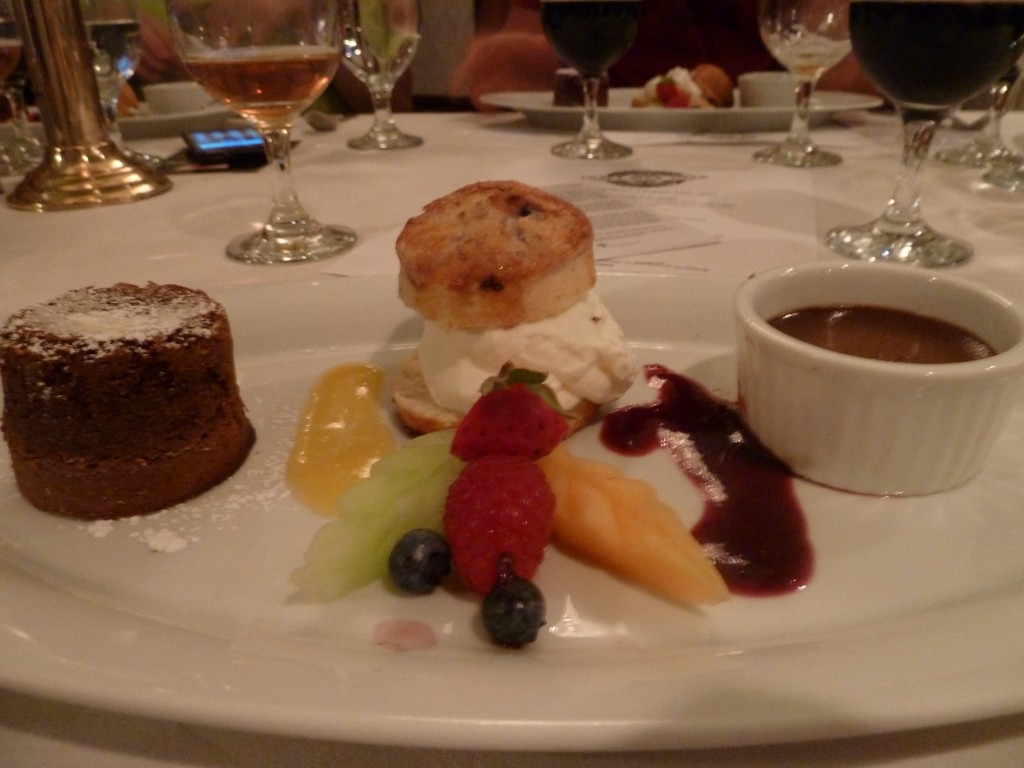
Sometimes, despite your best efforts, you can’t finish dessert. This was one of those times. Delicious, though.
Well, Sinha is going to work with Chocolate. It just is. There’s chocolate and coffee and practically a crème brulee burnt sugar character in amongst the roast character. It’s syrupy, which just reinforces the Pot de Crème and soufflé by causing a lingering sensation of melting chocolate. The odd thing is I’m not sure I’d had it previously.
The Venskab went fairly well with the blueberry scone, which had a mild lemon element to it. I think that’s the interplay of the yuzu. I practically want to try a plum galette with a citrus cream to try and match the Venskab. Maybe someday.
WHAT DID WE LEARN
1) We learned that when faced with the phrase “I’m going to steal that honey soy reduction idea,” Stephen Beaumont is unfazed.
2) Anders Kissmeyer is probably a misunderstood genius (by me, anyway).
3) Beaumont’s dinner menu illustrates a good balance of classic pairings and slightly riskier ones. This is actually a good tack to take as beer dinners will always have standout courses that will probably be different for each diner. You may as well try out a complex pairing next to a classic one. It provides some refreshing contrast for the guests and encourages conversation about each course. That’s important. No one likes eating in grim silence.
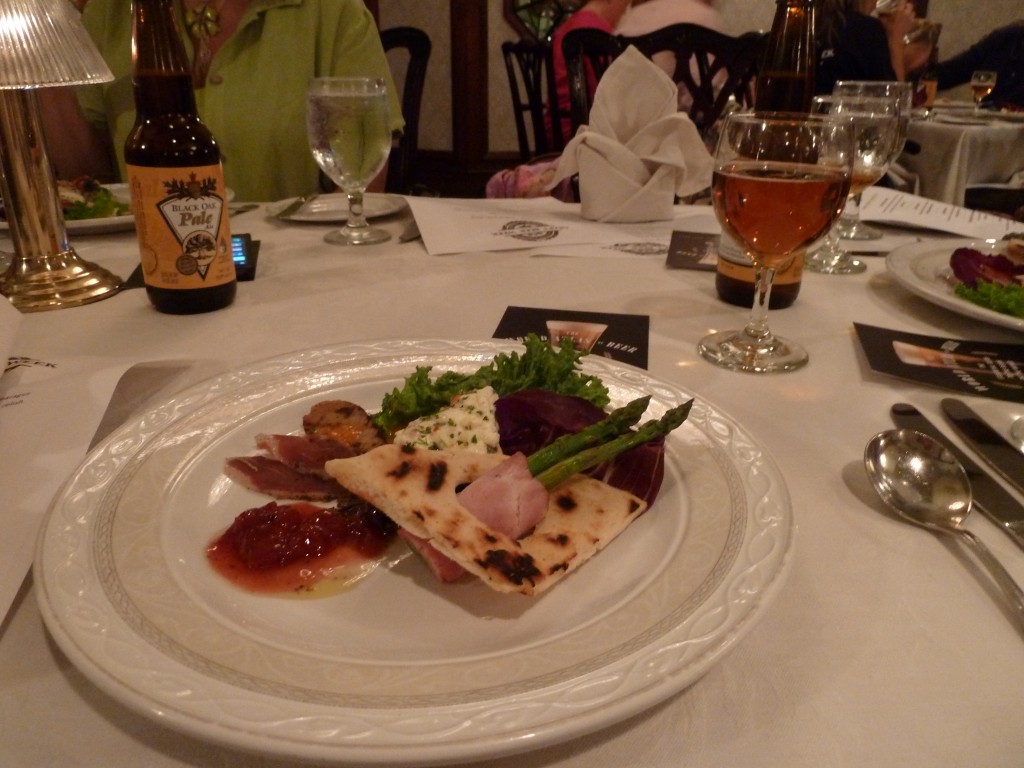
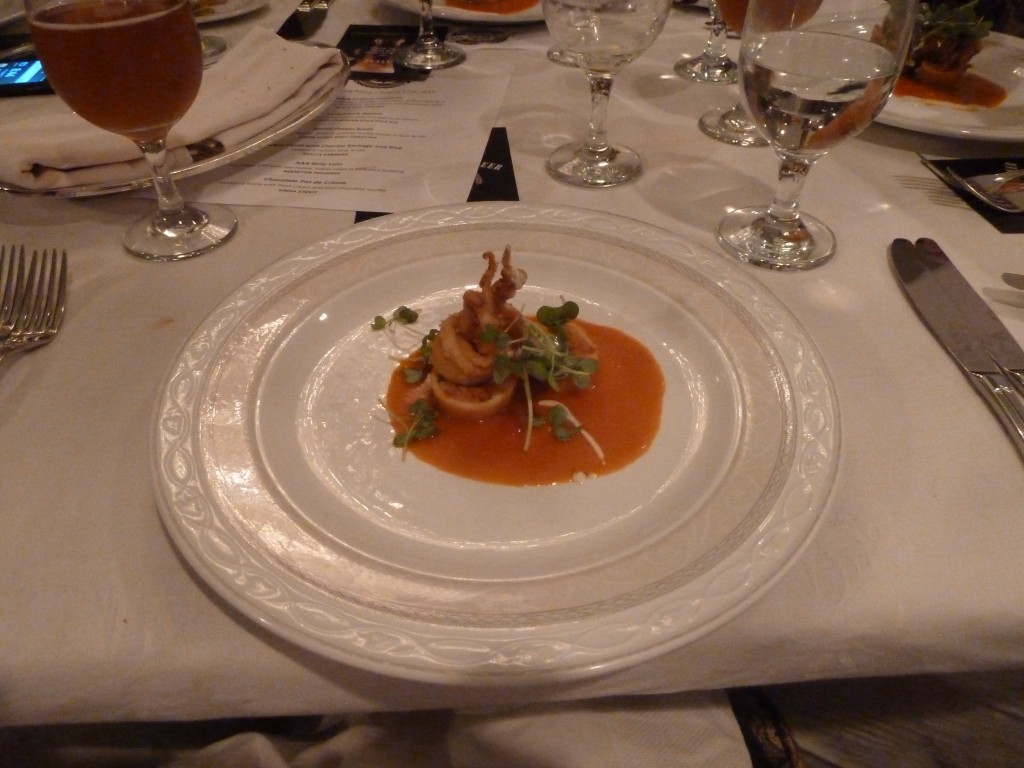
Just waiting when could i eat this i hope it would be great for a Christmas dinner.
http://ctfinebistro.com/blog/